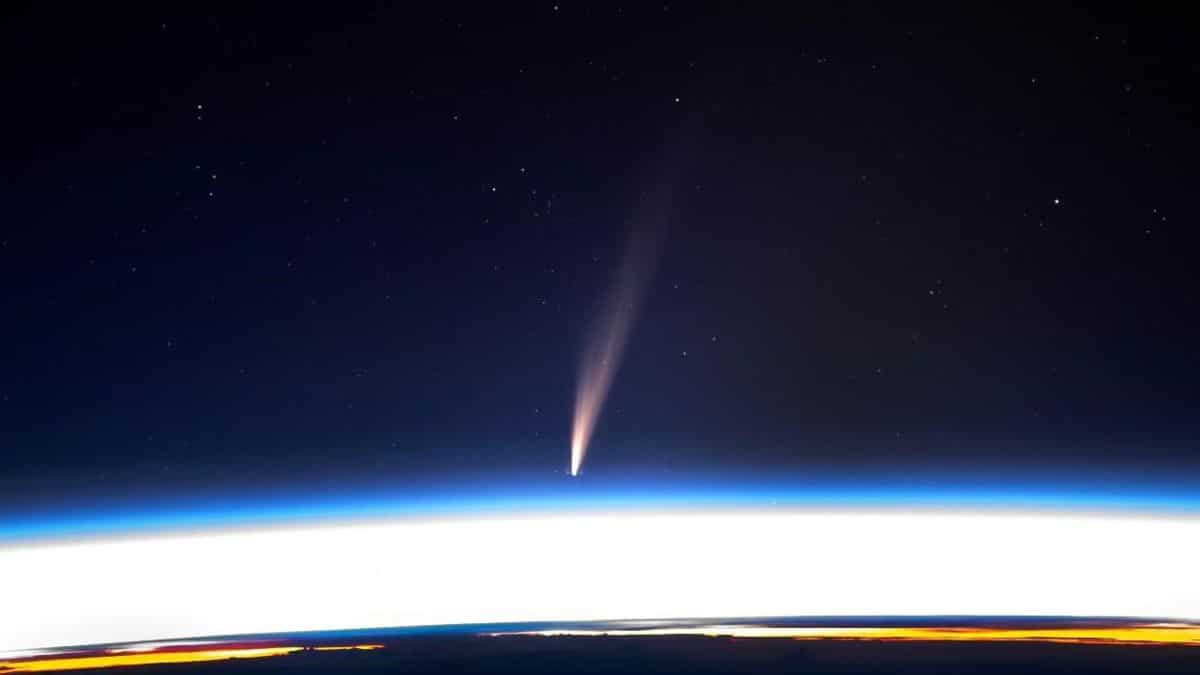The night sky will soon offer a spectacular show as the C/2024 G3 (Atlas) comet approaches Earth. This rare celestial visitor hasn’t been visible to human eyes for approximately 160,000 years. Astronomers and casual stargazers alike are preparing for this extraordinary event that promises to illuminate our skies in a way few living humans have ever witnessed.
Historic cosmic visitor approaching our solar system
First detected by NASA’s asteroid impact alert system last year, the Atlas C2024-G3 comet is currently on a trajectory toward its perihelion—the point in its orbit closest to the Sun. This cosmic wanderer is generating excitement throughout the scientific community due to its exceptional rarity.
“It’s truly incredible to see a comet from orbit,” shared astronaut Donald Pettit on social media, expressing his enthusiasm about this approaching celestial body. The comet’s 160,000-year orbital period means this appearance represents a once-in-countless-lifetimes opportunity for Earth’s current inhabitants.
According to Dr. Shyam Balaji, a researcher specializing in astroparticle physics and cosmology at King’s College London, current calculations indicate the comet will pass approximately 8.3 million kilometers from the Sun. This proximity classifies C/2024 G3 (Atlas) among the select group of sun-grazing comets—those that venture exceptionally close to our star.
NASA scientists have noted that while predicting exact comet brightness remains challenging, there’s significant potential for Atlas C2024-G3 to achieve naked-eye visibility during its closest approach. This characteristic makes the event particularly special for astronomy enthusiasts and casual observers alike.
Animals Are Fleeing Yellowstone — Is the Supervolcano About to Wake Up?
America Spots China’s Giant Fusion Laser During Reconnaissance Flyover
Viewing opportunities and challenges for comet watchers
Despite the excitement surrounding this rare visitor, viewing opportunities will vary significantly based on geographic location. Southern Hemisphere residents will enjoy optimal viewing conditions due to the comet’s orbital path and position relative to the Sun.
For those hoping to catch a glimpse of this cosmic spectacle, Dr. Balaji recommends specific viewing strategies:
- Southern Hemisphere observers should scan the eastern horizon before sunrise
- After perihelion, look toward the western horizon after sunset
- Find locations with minimal light pollution
- Consider using binoculars or small telescopes for enhanced viewing
- Monitor local astronomy clubs for updated viewing recommendations
Northern Hemisphere observers face greater challenges due to the comet’s position relative to the Sun. The orbital mechanics and timing will make visibility significantly more difficult from locations like Europe and North America, though not impossible under ideal conditions.
Weather conditions and the comet’s own behavior will ultimately determine visibility in any specific location. Patience and flexibility in observation planning will prove essential for those determined to witness this rare celestial event.
A Secret Ocean 700km Underground? Scientists Confirm Stunning Discovery
A Combustion Engine That Pollutes Nothing: 440 Horsepower and Only Water as Output
Understanding comets and their astronomical significance
Comets like C/2024 G3 (Atlas) offer valuable scientific opportunities beyond their visual spectacle. These ancient objects preserve pristine material from the early solar system, providing researchers with insights into our cosmic origins.
| Comet Characteristic | C/2024 G3 (Atlas) Details |
|---|---|
| Orbital Period | Approximately 160,000 years |
| Perihelion Distance | 8.3 million kilometers from Sun |
| Classification | Sun-grazing comet |
| Discovery | NASA asteroid impact alert system (2024) |
| Best Viewing | Southern Hemisphere |
As C/2024 G3 (Atlas) approaches the Sun, increased solar radiation will likely trigger greater outgassing and tail development, potentially enhancing its visibility. This interaction between the comet’s icy nucleus and solar energy creates the distinctive glowing coma and tail that make comets such captivating celestial objects.
For astronomy enthusiasts worldwide, this comet represents not just a visual treat but an opportunity to connect with cosmic processes that span timescales far beyond human experience. When we observe C/2024 G3 (Atlas), we’re witnessing material that has traveled the outer reaches of our solar system for tens of thousands of years, now briefly illuminated as it makes its rare journey past our planet.







